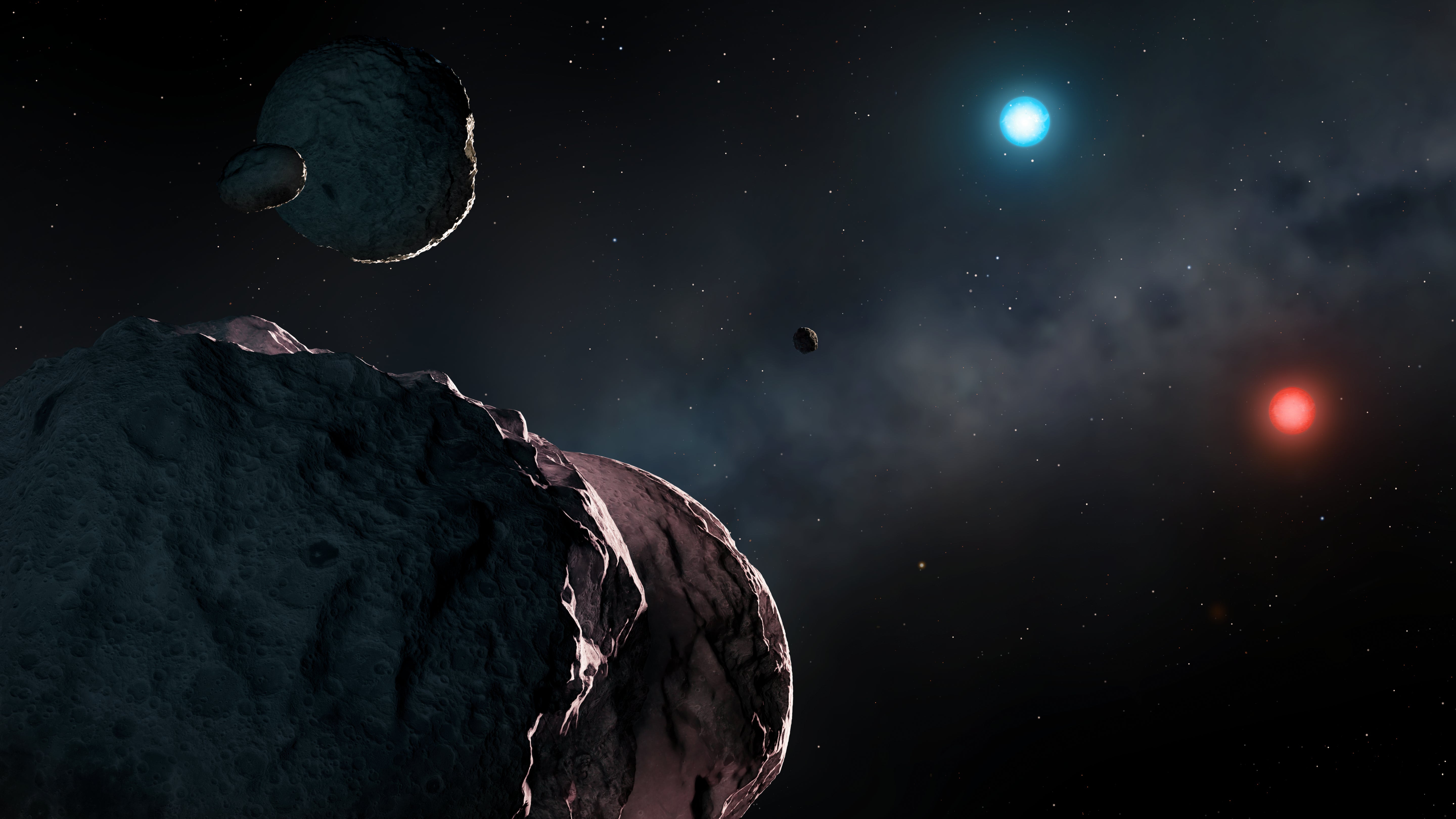New star system discovery may be oldest in our galaxy, scientists say
Two white dwarf stars that once looked like our sun are slowly consuming the rocky wreckage of the planets that once orbited them

Scientists may have discovered one of the oldest star systems with rocky planets in our galaxy, consisting of two white dwarf stars and the remains of rocky planets that are more than 10 billion years old.
A star like our sun will eventually use up most of its thermonuclear fuel, at first swelling into a large red giant star, and then shrinking and cooling into a smaller white dwarf star.
Researchers at the University of Warwick have discovered two white dwarf stars about 90 light years from Earth, whose light is changing colour due to material from former rocky planets, likely destroyed by the stars’ red giant phase, falling into the two stars. The slightly reddish WDJ2147-4035 white dwarf star is about 10.7 billion years old, according to a paper published on Saturday in the Monthly Notices of the Royal Astronomical Society, while a second blueish star, WDJ1922+0233, is just slightly younger.
“We’re finding the oldest stellar remnants in the Milky Way that are polluted by once Earth-like planets,” University of Warwick PhD student in physics and lead author of the study Abbigail Elms said in a statement. “It’s amazing to think that this happened on the scale of 10 billion years, and that those planets died way before the Earth was even formed.”
The researchers first identified the two stars using the European Space Agency’s Gaia space observatory. They then used the European Southern Observatory’s X-Shooter spectrography instrument to analyse the light of the stars in order to measure what materials were present in those stars.
The reddish star WDJ2147-4035 exhibited signs that it is being polluted by sodium, lithium, potassium, and possibly carbon from the remnants of planets surrounding the star.
“The red star WDJ2147-4035 is a mystery, as the accreted planetary debris are very lithium- and potassium-rich, and unlike anything known in our own solar system,” Ms Elms said. “This is a very interesting white dwarf, as its ultra-cool surface temperature, the metals polluting it, its old age, and the fact that it is magnetic, make it extremely rare.”
The blueish star WDJ1922+0233 appears to be polluted by materials much more like Earth’s crust in their composition.
“These metal-polluted stars show that Earth isn’t unique: there are other planetary systems out there with planetary bodies similar to the Earth,” Ms Elms said, adding that there are also other stars on the same lifecourse as our sun, destined to become white dwarfs. “Formed from the oldest stars in our galaxy, cool white dwarfs provide information on the formation and evolution of planetary systems around the oldest stars in the Milky Way.”
Subscribe to Independent Premium to bookmark this article
Want to bookmark your favourite articles and stories to read or reference later? Start your Independent Premium subscription today.

Join our commenting forum
Join thought-provoking conversations, follow other Independent readers and see their replies